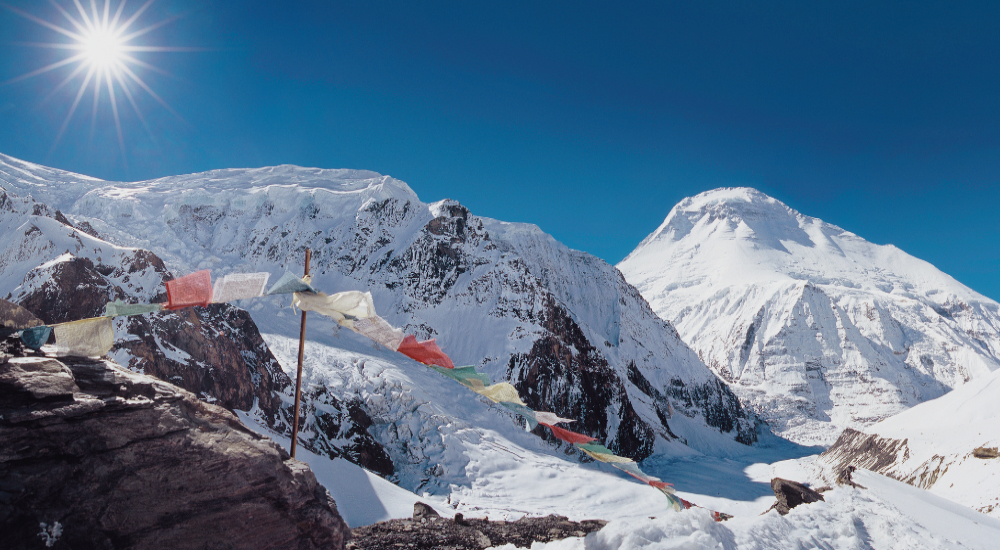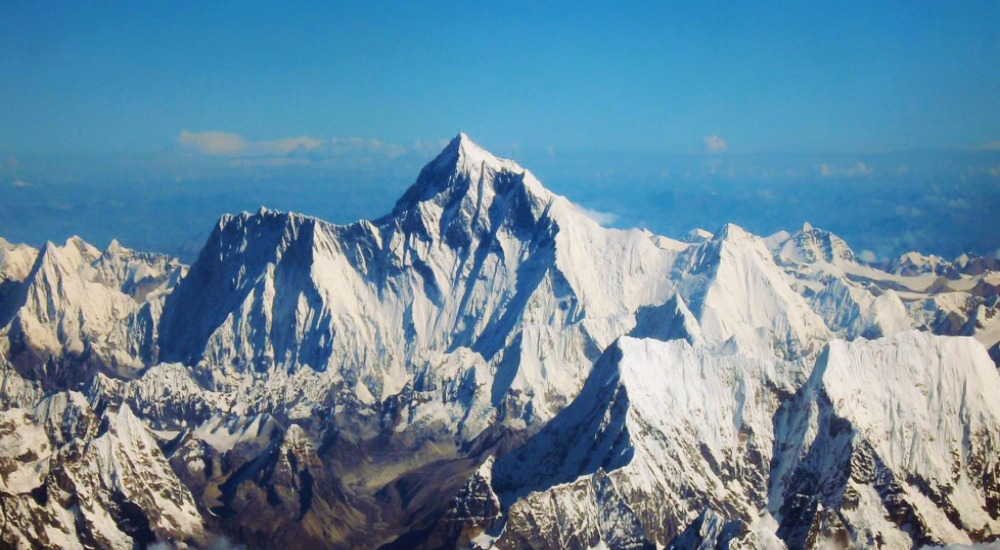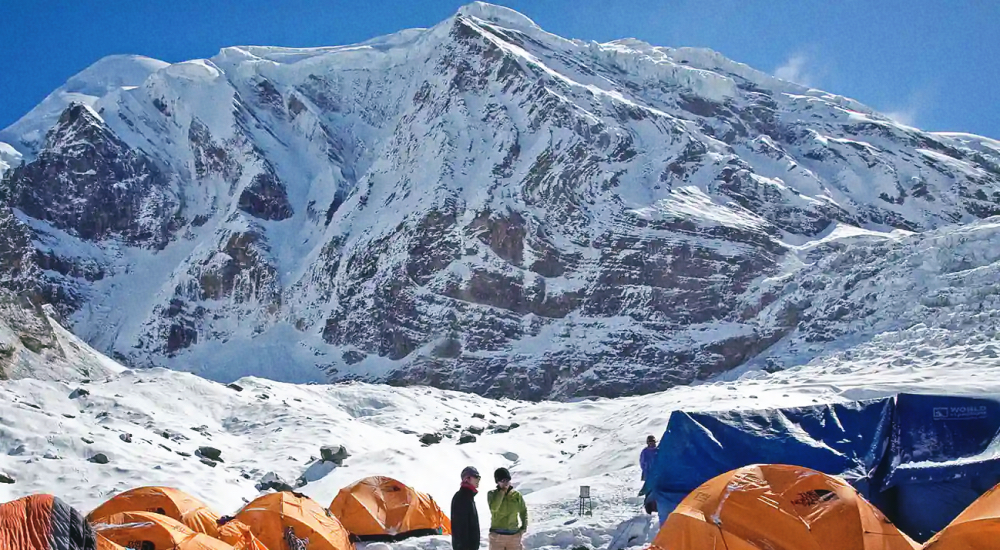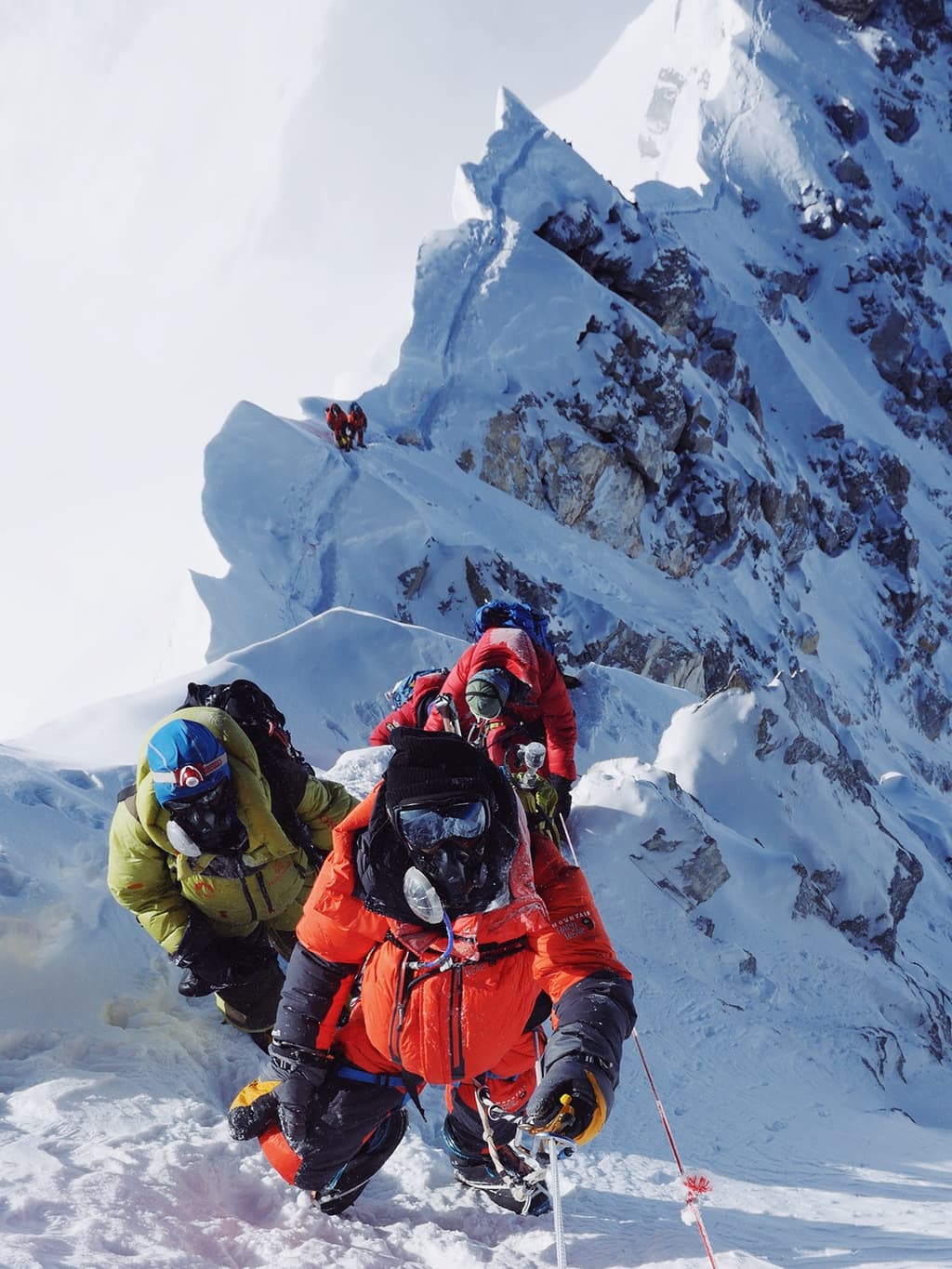Ever stood at 8,167 meters, where the air is so thin your lungs scream and every step feels like wading through invisible mud? That's Dhaulagiri – the seventh highest peak on Earth and possibly Nepal's most technically challenging climb.
Most climbers who attempt this savage mountain don't make it. Not because they lack skill, but because Dhaulagiri demands something deeper – a peculiar blend of technical expertise, mental fortitude, and sheer stubborn grit.

Our Dhaulagiri Expedition isn't for the casual mountaineer looking to tick off another peak. It's for those rare souls who understand that true adventure lies where comfort ends and uncertainty begins.
What makes some expeditions succeed where others fail? The answer might surprise even seasoned climbers.
Dhaulagiri: The White Mountain Challenge
Overview of the 7th highest peak in the world (8,167m)

Dhaulagiri stands tall at 8,167 meters, making it the seventh highest mountain on our planet. We've always been fascinated by its massive presence in the Nepal Himalayas. The name "Dhaulagiri" comes from Sanskrit, meaning "White Mountain" - and trust us, it lives up to that name with its dazzling snow-capped summit that seems to touch the sky.
The mountain forms part of the stunning Dhaulagiri massif, extending 120 km from the Kaligandaki River west to the Bheri. What makes this peak truly remarkable is its impressive rise from local terrain - Dhaulagiri rises a whopping 7,000 meters from the Kaligandaki River gorge to the east, creating one of the most dramatic landscapes we've ever witnessed.
Historical significance in Himalayan mountaineering
The first documented sighting of Dhaulagiri by Europeans happened in 1808, but it wasn't until 1960 that a Swiss-Austrian expedition finally conquered its summit. This marked a pivotal moment in mountaineering history - it was the first Himalayan climb completed with a ski plane landing at 5,700m on the Northeast Col.
For years, Dhaulagiri was believed to be the highest mountain in the world before measurements confirmed Everest's superior height. Each expedition since has written its own chapter in the mountain's rich history. We've watched climbers battle its notorious unpredictable weather and treacherous avalanche-prone slopes.
Why climbers seek this less-crowded alternative to Everest
While Everest draws crowds, serious mountaineers often turn to Dhaulagiri for a more authentic challenge. We find that climbers choose Dhaulagiri for its technical difficulty and the solitude it offers. The standard Northeast Ridge route demands genuine climbing skill rather than just endurance.
The mountain sees only a fraction of Everest's traffic - maybe 30-40 successful summits in a good year compared to hundreds on Everest. This means more genuine wilderness experience and less time waiting in lines. The routes remain pristine, challenging, and true to the spirit of adventure.
The cost difference is substantial too. We can arrange a Dhaulagiri expedition for roughly half the price of Everest, making it accessible to serious climbers without massive sponsorships.
Everest Sherpa Expeditions' experience on Dhaulagiri
We've been guiding climbers on Dhaulagiri for over a decade, establishing ourselves as specialists on this magnificent peak. Our team includes Sherpas who've summited multiple times and know every crevasse and weather pattern intimately.
Our base camp setup balances comfort with mountain practicality, and we maintain three well-stocked high camps strategically positioned for acclimatization and summit pushes. Safety remains our top priority - we equip every expedition with satellite communications, comprehensive medical supplies, and emergency evacuation protocols.
What sets us apart is our success rate. We're proud that our climbers achieve summit success at nearly twice the overall average on Dhaulagiri. This comes from our meticulous preparation, flexible scheduling to account for weather windows, and the expertise of our guides.
Planning Your Dhaulagiri Expedition
Optimal climbing seasons: Spring vs. Autumn
We've guided countless expeditions to Dhaulagiri, and timing is everything. Spring (April-May) offers more stable weather with warming temperatures that melt winter snow and create better climbing conditions. Autumn (September-October) brings cooler temperatures and typically less precipitation, but days grow shorter and colder as the season progresses.
|
Season |
Pros |
Cons |
|
Spring |
Longer days, warming trend, fixed ropes in place |
Crowded, potential late-season monsoon |
|
Autumn |
Clearer skies, less crowded, stable snow |
Colder temperatures, shorter days |
Most of our successful summit attempts happen in late April to early May when conditions on the mountain are most favorable.
Required permits and documentation
We handle the paperwork, but it's good to know what's needed. For Dhaulagiri, you'll need:
-
Dhaulagiri Climbing Permit ($1,800 spring/$900 autumn)
-
Annapurna Conservation Area Permit (ACAP)
-
TIMS Card (Trekkers' Information Management System)
-
Valid passport with 6+ months validity
-
Travel insurance with high-altitude evacuation (minimum $100,000 coverage)
-
4 passport photos
All permits must be arranged through a registered Nepali agency (that's us!). We recommend starting the permit process at least 3 months before your expedition.
Physical preparation and training recommendations
Dhaulagiri demands serious physical conditioning. We suggest a 6-month training program focusing on:
-
Cardio endurance: 1-2 hour sessions 4-5 times weekly
-
Strength training: Focus on legs and core 3 times weekly
-
Loaded hiking: Regular 6-8 hour hikes with 20kg pack
-
Technical climbing practice: Ice axe use, crampon techniques
-
Acclimatization climbs: Pre-expedition climbs above 5,000m if possible
The better shape you arrive in, the higher your summit chances. Many climbers underestimate Dhaulagiri's technical challenges, so rope skills and crampon experience are non-negotiable.
Essential gear checklist
Our expeditions provide group equipment, but personal gear is crucial:
-
High-altitude boots (double or triple)
-
Down suit (-40°C rating)
-
Sleeping bag (-30°C rating)
-
2 ice axes (technical and walking)
-
Crampons (preferably with anti-balling plates)
-
Harness, carabiners, ascenders, descenders
-
4-season tent (if not using our camp services)
-
3 layers for upper and lower body
-
Multiple glove systems (liner, mid, shell)
-
Sun protection (high SPF, glacier glasses)
-
Headlamp with extra batteries
We can arrange rental of technical gear in Kathmandu, but we strongly recommend bringing your own boots and sleeping bag for comfort.
Typical expedition duration and itinerary
Our Dhaulagiri expeditions run 42-45 days, allowing proper acclimatization:
- Arrival in Kathmandu (2-3 days): Permit processing, gear check
-
Drive to Beni, trek to Base Camp (7 days)
-
Base Camp setup and acclimatization (3-4 days)
-
Rotation to Camp 1 (5,900m) and return to Base Camp (4-5 days)
-
Rest at Base Camp (2-3 days)
-
Rotation to Camp 2 (6,400m) and return (5-6 days)
-
Rest at Base Camp (2-3 days)
-
Rotation to Camp 3 (7,200m) and return (5-6 days)
-
Final rest at Base Camp (3-4 days)
-
Summit push through Camps 1, 2, 3 and 4 (7,500m) (5-7 days)
-
Return trek and drive to Kathmandu (4-5 days)
The schedule remains flexible to accommodate weather windows and team condition. We build in extra days for unexpected challenges or summit attempts.
The Climbing Route

Base Camp Setup and Facilities
At 4,650 meters, our Dhaulagiri Base Camp sits on a rocky moraine at the edge of the massive Dhaulagiri glacier. We position it carefully to avoid avalanche paths while maintaining access to the climbing route.
Our base camp isn't just functional—it's your home for weeks. We provide spacious personal tents with comfortable sleeping pads and warm sleeping bags rated for extreme conditions. The dining tent becomes the heart of base camp, equipped with tables, chairs, and a small library of books and games for downtime.
Our kitchen team works magic with limited resources, preparing varied meals from fresh ingredients we porter in regularly. Hot showers? Yes, we've got those too—a luxury you'll appreciate after grueling days on the mountain.
Communication is crucial, so we maintain reliable internet and phone connectivity via satellite systems. Our medical tent contains comprehensive first aid supplies and oxygen systems for emergencies.
The Technical Challenges of the Northeast Ridge
The Northeast Ridge isn't playing around. This route demands serious technical climbing skills even by 8000er standards.
Right from the start, we face steep ice slopes requiring front-pointing with crampons and confident ice axe technique. The ridge itself presents a mix of rock and ice climbing, with sections of exposed traverses where a simple mistake isn't an option.
Wind is our constant companion on the ridge, often reaching hurricane force. We've learned to time our movements during brief weather windows, sometimes waiting days for conditions to improve.
The sustained technical difficulty is what really sets Dhaulagiri apart. Unlike Everest, where specific sections pose challenges, Dhaulagiri's Northeast Ridge requires continuous focus and technical climbing from 6,000 meters all the way to the summit.
Key Sections: The Ice Fall, Difficult Rock Band, and Summit Push
The first major obstacle we encounter is the notorious Dhaulagiri Ice Fall. Unlike its Everest counterpart, this icefall receives far less traffic, meaning fewer fixed ropes and ladders. We navigate through massive seracs and crevasses, establishing Camp 1 at approximately 5,900 meters once through this labyrinth.
The Difficult Rock Band between 7,200-7,500 meters presents the route's most technical climbing. This mixed rock and ice section requires delicate climbing at extreme altitude where oxygen levels are roughly 40% of sea level. We fix ropes here, but climbers still need solid rock climbing skills while wearing crampons and handling extreme exposure.
Our summit push begins from Camp 3 (7,500m) and typically starts around midnight. The final 650 meters involves steep snow slopes leading to the knife-edge summit ridge. This exposed traverse demands absolute concentration despite the thin air affecting your mental clarity. The true summit is small—just enough space for a few climbers to stand together and absorb the view of the entire Himalayan range spreading out below.
Comparative Difficulty vs. Other 8000m Peaks
Dhaulagiri stands as one of the most technically demanding 8000-meter peaks. Here's how it compares:
|
Aspect |
Dhaulagiri |
Everest |
K2 |
Cho Oyu |
|
Technical Difficulty |
Very High |
Moderate (standard route) |
Extreme |
Moderate |
|
Avalanche Risk |
High |
Moderate |
High |
Low |
|
Route Finding |
Complex |
Well-established |
Complex |
Straightforward |
|
Summit Success Rate |
~20% |
~60% |
~25% |
~65% |
|
Weather Windows |
Few, short |
Limited but predictable |
Very few |
Relatively frequent |
We often say Dhaulagiri combines the altitude challenge of Everest with technical sections reminiscent of K2. While it doesn't reach the extreme difficulty of K2's upper sections, it's substantially more technical than Everest's standard routes and lacks the relative straightforwardness of Cho Oyu.
The mountain's isolation also means rescue operations are complicated and weather forecasting less reliable than on more frequently climbed peaks. This combination of factors makes Dhaulagiri a serious undertaking even for experienced high-altitude climbers.
Everest Sherpa Expeditions' Unique Approach
Our specialized Sherpa team for Dhaulagiri
We don't just hire Sherpas – we partner with elite mountaineers who've conquered Dhaulagiri multiple times. Our team members average 8+ summits each on 8000m peaks, bringing unmatched route knowledge to your expedition. Unlike other companies, we maintain a 1:1 client-to-Sherpa ratio on summit day, ensuring you receive personalized support when you need it most.
Our Sherpas aren't just guides; they're lifelong mountaineers with generations of high-altitude wisdom. They know every crevasse, every weather pattern, and exactly when to push forward or retreat. This isn't something you learn in training – it's something they've lived.
Safety protocols and oxygen systems
Your safety isn't an afterthought – it's our obsession. We implement a three-layer safety system with daily health checks, constant radio communication, and strategic rescue protocols. Our oxygen systems feature the latest Poisk or Summit Oxygen equipment with redundant backups for each climber.
We've invested in emergency oxygen caches at strategic points along the route and maintain a higher oxygen flow rate than industry standard. Why? Because we've seen how proper oxygen use dramatically increases summit success while reducing risk.
Base camp amenities and communication services

We've transformed the traditional Dhaulagiri base camp experience. Our heated dining dome serves as the expedition hub with custom meals prepared by our dedicated chef. Yes, fresh bread at 4,700m is possible!
Our communication setup includes satellite internet, daily weather forecasts, and unlimited charging for your devices. We maintain direct satellite phone connections to our Kathmandu office and emergency services.
Success rate and expedition philosophy
Our 78% summit success rate on Dhaulagiri speaks volumes, but numbers don't tell the whole story. We believe true expedition success means returning home safely with profound memories.
We don't push climbers beyond their limits for a summit photo. Instead, we build your skills and acclimatization systematically, creating the conditions where summit success happens naturally. Our philosophy is simple: we climb with you, not just guide you. Every challenge, every triumph becomes a shared experience.
Life on the Mountain
Daily routines during acclimatization
We wake before dawn each day on Dhaulagiri, when the mountain is still quiet and the stars hang brilliantly overhead. Our mornings start with hot drinks in sleeping bags – a small luxury at 6,000+ meters. By 7 AM, we're fueling up with oatmeal, eggs, or chapati prepared by our incredible kitchen team.
Acclimatization isn't just climbing higher then sleeping lower. We've developed a rhythm that works for our bodies and the mountain. On active days, we depart camp by 8 AM to avoid afternoon storms. We move deliberately, never rushing. "Pole pole" (slowly slowly) is our mantra – the tortoise always beats the hare on 8,000-meter peaks.
Rest days are equally important. We hydrate constantly, check oxygen saturation levels, and perform gear maintenance. Some of us read dog-eared paperbacks while others play cards or write in journals. These quiet moments matter as much as the climbing.
Nutrition and hydration at extreme altitude
Food becomes both essential and challenging above 7,000 meters. Our bodies demand 4,000-5,000 calories daily, yet altitude suppresses appetite when we need fuel most. We combat this by eating small, frequent meals packed with carbs, proteins and fats.
Our nutrition strategy:
|
Meal |
Focus |
Examples |
|
Breakfast |
Complex carbs |
Oatmeal, pancakes, eggs |
|
Climbing snacks |
Quick energy |
Chocolate, nuts, jerky, energy bars |
|
Dinner |
Protein recovery |
Dal bhat, pasta, soups |
Hydration is non-negotiable. We aim for 5-6 liters daily, starting with water first thing in the morning. We add electrolyte tablets to combat the constant fluid loss from heavy breathing in the dry air. Dehydration leads to poor performance, altitude sickness, and even frostbite, so we constantly remind each other to drink.
Dealing with weather windows and expedition decision-making
Weather dictates everything on Dhaulagiri. We huddle around the satellite phone each evening for the forecast – our lifeline to information that determines our next move. A good weather window means go time; bad weather means patience.
Decision-making requires balancing multiple factors: team strength, weather forecasts, avalanche conditions, and climbing ethics. We hold team meetings before major pushes, ensuring everyone's voice is heard. Some decisions are democratic, others require experienced expedition leaders to make the call.
The toughest decisions come when good weather windows conflict with proper acclimatization or team readiness. We've learned the hard way that rushing to the summit during the first good window often ends poorly. Sometimes the bravest decision is turning around – the mountain will always be there tomorrow.
Team dynamics and mental preparation
Eight thousand meter peaks break you down physically and mentally. We've found mental resilience matters as much as physical strength. Our team becomes family – we celebrate birthdays with improvised cakes, share stories of home, and support each other through inevitable low moments.
Conflict happens on expeditions. Small annoyances amplify at altitude when everyone's tired, cold and hungry. We address issues openly before they fester, practicing direct communication tempered with compassion.
Mental preparation techniques keep us focused: visualization of successful climbs, meditation exercises, and breaking the enormous challenge into manageable segments. We remind ourselves that suffering is temporary, but summiting creates memories that last forever.
The most successful teams share a unified purpose while respecting individual needs. On summit day, we move as one unit while watching out for each other. We've turned back when a team member shows signs of altitude sickness – no summit is worth a life.
Booking Your Dhaulagiri Adventure
Expedition packages and pricing options
We've carefully crafted a range of Dhaulagiri expedition packages to suit different budgets and preferences. Our standard 42-day expedition starts at $19,500, covering permits, transportation, accommodation, food, climbing equipment, and Sherpa support. For those seeking more comfort, our premium package at $24,900 includes private tents, enhanced meals, additional oxygen, and personal climbing guides.
Budget-conscious climbers can opt for our basic package at $17,200, which provides essential services while allowing you to bring some of your own gear.
Customization possibilities
No two climbers are alike, which is why we make every Dhaulagiri expedition uniquely yours. Want extra acclimatization days? Need specialized gear? Prefer vegetarian meals? Just ask. We can add helicopter evacuations, satellite phones, or extra oxygen. Some clients even request specific Sherpas they've climbed with before.
Our team works with you to build the perfect expedition that balances your experience level, physical condition, and personal preferences.
Pre-expedition consultation process
Before you set foot on Dhaulagiri, we'll walk you through our comprehensive consultation process. It starts with a detailed questionnaire about your climbing history, medical conditions, and goals. Next comes a video call with our expedition leader who'll assess your readiness and answer questions.
We'll review your gear list, suggest training plans, and connect you with previous climbers. This isn't just paperwork—it's how we build successful summit bids and keep everyone safe.
Travel and arrival logistics in Nepal
Once you're booked, we handle the complicated stuff. Our team will meet you at Tribhuvan International Airport in Kathmandu and transfer you to your hotel. We'll help with any last-minute shopping in Thamel and handle permit paperwork while you acclimatize.
From Kathmandu, we arrange all transportation to the trailhead, including domestic flights to Pokhara and jeep transfers. Our logistics team monitors weather patterns to optimize travel days, avoiding typical delays.
Post-expedition services
After the climb, we don't just say goodbye. Our post-expedition services include transportation back to Kathmandu, celebration dinners, and certificate presentations. We'll help arrange additional sightseeing if you want to explore Nepal further.
For those who summited, we handle media coordination if requested and provide high-resolution photos of your achievement. We even offer storage services if you want to leave equipment for future climbs. Many climbers become part of our extended family, returning for future expeditions with special returning climber discounts.
The journey to conquer Dhaulagiri, the magnificent "White Mountain," represents one of mountaineering's ultimate challenges. From meticulous expedition planning to navigating the technical climbing route, every aspect of this adventure demands respect and preparation. With Everest Sherpa Expeditions' expert guidance, climbers benefit from local knowledge, experienced Sherpa support, and a safety-focused approach that has led to numerous successful summits.
Your Dhaulagiri expedition isn't merely about reaching the top—it's about experiencing life on the mountain, forming lasting bonds with fellow climbers, and pushing beyond perceived limitations. As countless testimonials from our successful clients attest, this journey transforms lives. When you're ready to embrace the challenge of the world's seventh highest peak, Everest Sherpa Expeditions stands ready to turn your Dhaulagiri dream into reality. Take the first step toward your White Mountain adventure today.
If you need any further information, please contact us by email: [email protected], Phone: +977- 980 195 6248 (WhatsApp).


